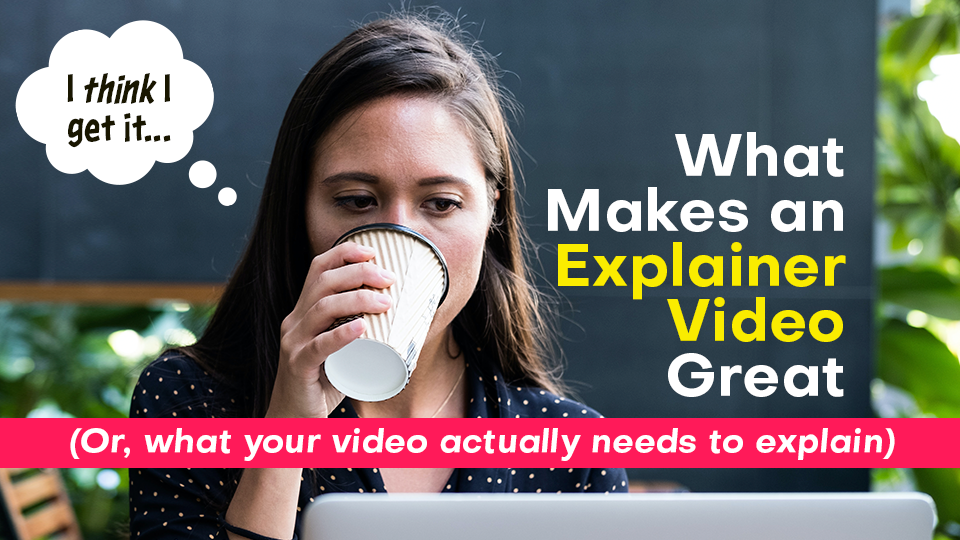
If you work in animation and video production you have almost certainly been asked, “Do you make explainer videos?” We see them as TV commercials, sprinkled throughout social media, and prominently displayed on the homepages of business’ websites. It’s a style of video that is a mainstay for the category, but some of its undefined features leave viewers wanting more.
Many companies fall into the trap of using an explainer video to commonly state a problem and provide a passive solution. They overspend on visuals when really they should be using their budgets on “extensive research on what visitors want to see, and deliver[ing] it with a simple, but super clear walkthrough” (Devesh Khanal, Co-Founder of Grow and Convert). After all, an explainer video is meant to first and foremost explain.
How do you make an explainer great? At Outlier we define a great explainer video as one that is not just visually appealing, but also educational and able to convert.
Visually Appealing Video
Visually you could rate dozens of animated videos from best to worst and still not zero in on how succinctly they “explain” a problem or solution. Visuals are important, but only one part of the criteria for making a great explainer video. Yet, many companies have this backwards.
Their explainer videos over invest in playfulness by incorporating sing-songy tunes and cartoon elements. These childish elements are not only becoming far too common in the category, they often go too far.
Most explainer videos forget to account for their target audience. They load up on cartoons, characters and bouncy songs to explain especially simple concepts. Animation is an enormously helpful tool when used correctly, but only if it acknowledges the age and knowledge level of the viewer.
The above video accurately assesses the viewer’s age and uses animation that is not playful, but rather informative for data visualization. Explainers, like these, that use visuals to break down complex ideas enhance conceptual understanding. Marketers have taken this effective teaching tool and broadened it to products and services for a reason.
Strategic animation that accounts for the maturity level of its audience and supplements understanding can keep your audience engaged.
Educational Video
A visually appealing explainer that does not explain your product or service misses the mark. A good explainer video should provide a clear solution to a real problem. Don’t waste your video time on declaring the obvious, “People are busy” or “You have options.” Get to the point of what your product or service does. If it’s a product, show the product in use along with helpful verbal explanations and cues. Think of an explainer video like a mini product demo–this is your user’s first interaction with it and you want it to be memorable.
Some ideas or products are not easy to experience without background information. Software, policies, scientific principles, and business strategies are all complex ideas that need to be broken down for quick comprehension. Explainer videos should build this foundation to ensure that the viewer understands and wants to learn more.
Video that Converts
If the ultimate goal of an explainer video is to convert viewers into subscribers, paying customers, or believers in your idea, then you can measure how well the video converts by giving viewers options to take action. Why would they take action? Well, now they should have a better understanding and desire for your product or service.
In regards to metrics, look at how many people start watching the video. How many people finish watching the video? If there is a large discrepancy, your explainer video may not be too helpful and/or it may be too long. Hubspot’s general rule of thumb is to cap videos shared on social platforms at no more than two minutes
You want your audience to take action. Acknowledge your audience’s attention span…and get to the point quickly.
Marketing with Video More Effectively
Ask someone on your customer support team if they would be able to answer user questions with your video. What are the next steps for viewers? Are you linking to the appropriate resources, forms, or related videos? How will viewers continue to engage?
These questions and reflections are crucial to measure the efficacy of your explainer video. You need to set up your explainer video for success. A great explainer – visually appealing and educational – should not just stop there. It needs to convert.

